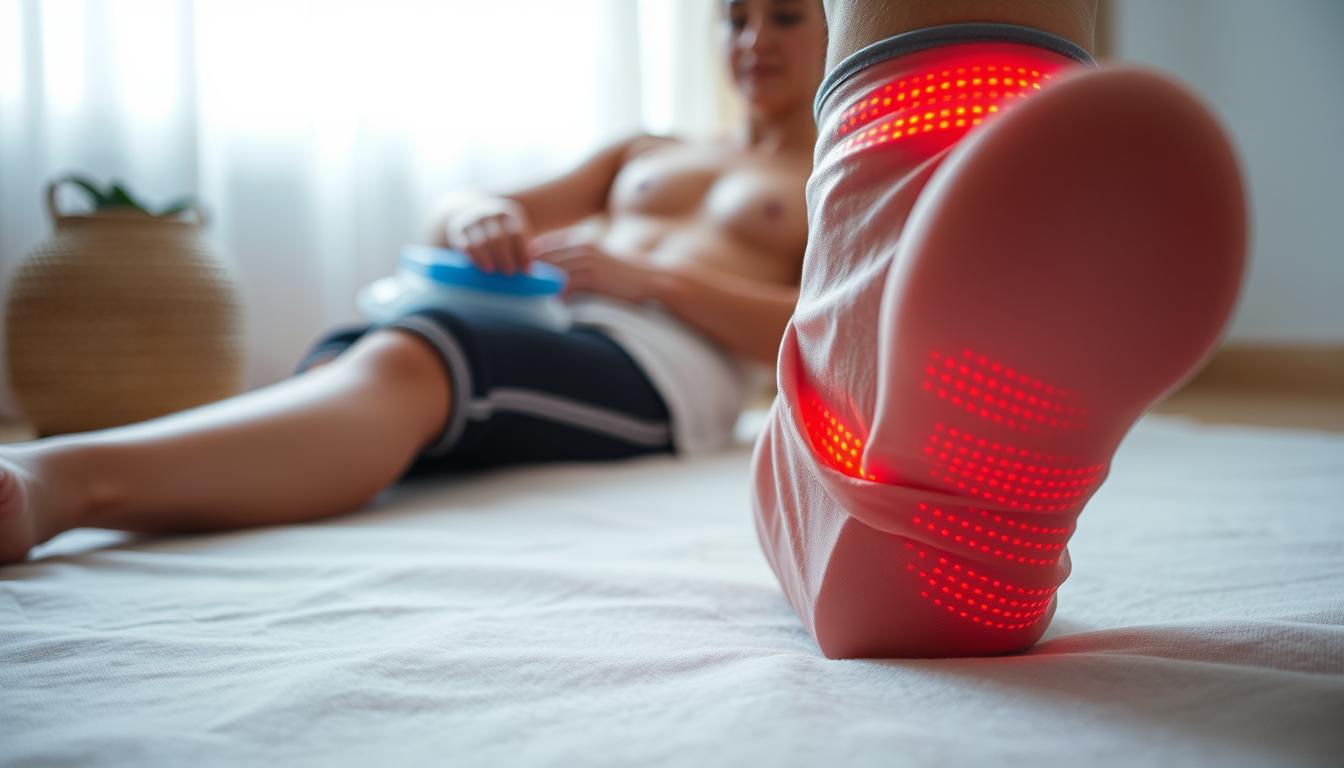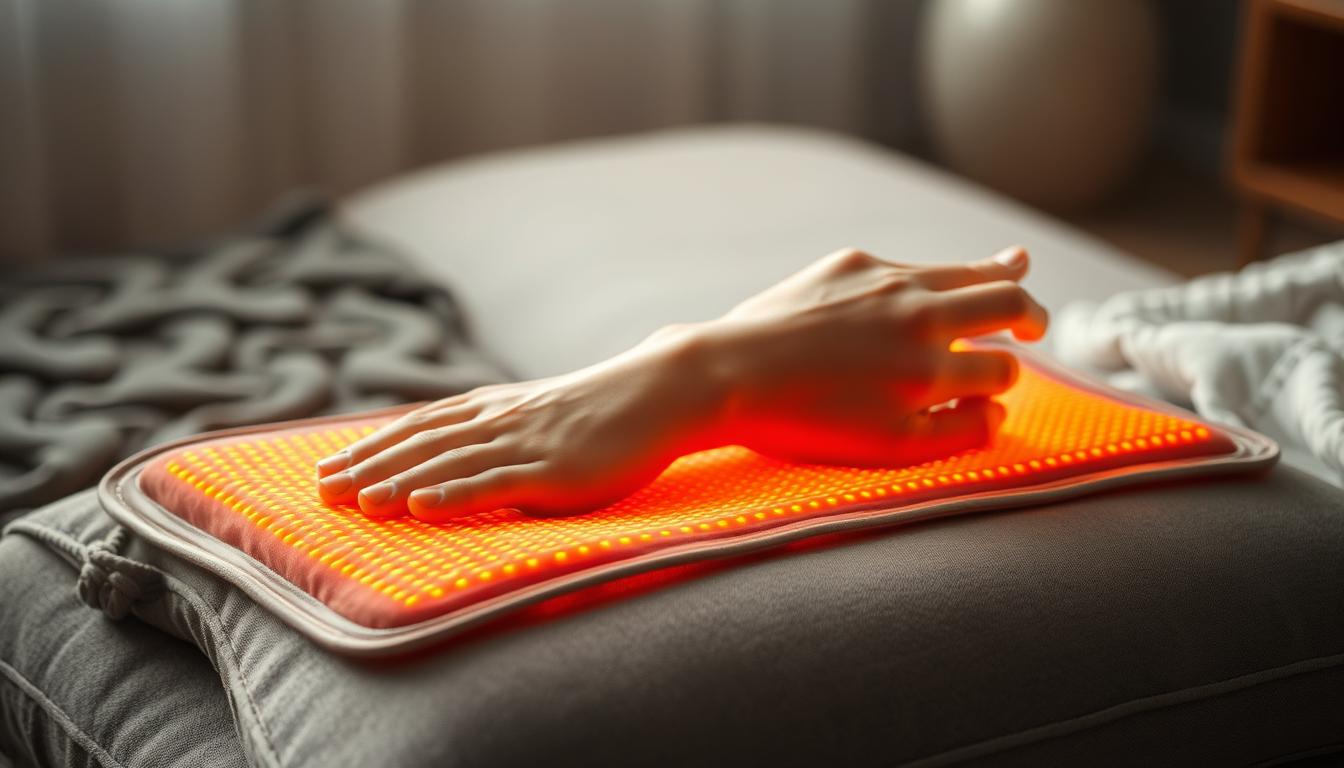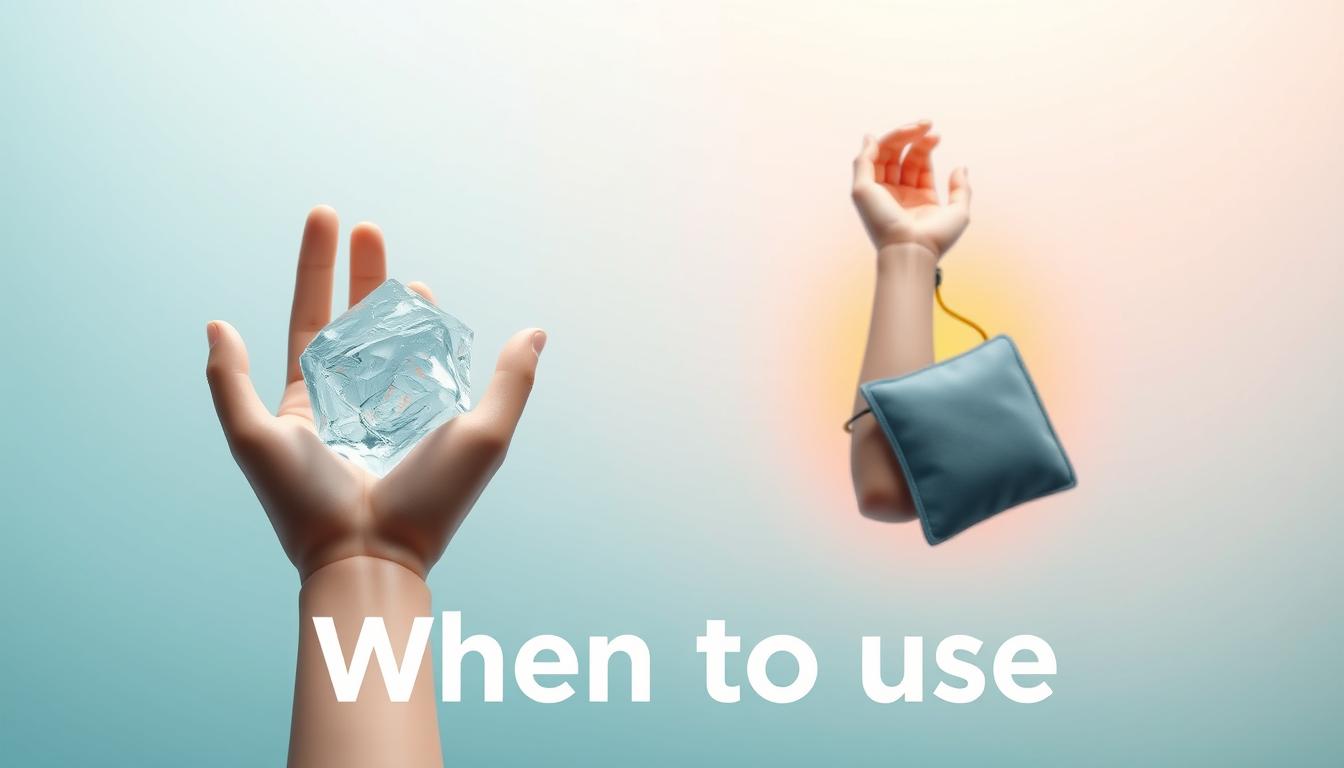When muscle soreness hits, you don’t always need medicine. Heat and cold therapies can offer muscle soreness relief. Learning how to use them right is crucial for natural pain relief and quick recovery. Whether it’s from working out or everyday tasks, knowing when to use heat or cold can be a game-changer.
In this guide, we’ll show you how to use hot and cold therapy to aid your healing. These methods can help ease muscle tension and support your recovery.

Key Takeaways
Heat and cold therapy can alleviate muscle soreness without reliance on medication.
Heat helps improve blood circulation and flexibility in stiff muscles.
Cold therapy effectively reduces inflammation and swelling.
Different symptoms call for different types of therapy.
Proper application techniques are essential for maximum benefit.
DIY recovery methods can be easily implemented at home.
Understanding Muscle Soreness and Pain
Muscle soreness often happens after you’ve been active. It makes you feel uncomfortable and can get in the way of your daily life. Micro-injuries to the muscle fibers cause soreness. These tears occur when you do intense exercise or try something new physically.
A common phenomenon is delayed onset muscle soreness, or DOMS. It shows up 24 to 48 hours after hard workouts. Unlike acute pain, which happens right away, DOMS takes time to appear. You might feel stiff, tender, and even a bit swollen.
Many things can lead to muscle discomfort. Too much strain on your muscles is one. Not warming up enough can also cause injuries. Insufficient rest can exacerbate muscle soreness. Knowing these factors helps you manage pain better and find relief for sore muscles.

Benefits of Heat and Cold Therapy
Heat and cold therapy can greatly improve muscle recovery. Each method has its own benefits for different types of pain. Knowing how they work can help you choose the best option for you.
How Heat Helps with Stiffness and Blood Flow
Heat therapy is great for improving circulation and easing tight muscles. It increases blood flow, speeding up healing. This makes your muscles ready for activity, perfect for warm-ups.
Many people use heat to relieve chronic tension. It helps keep muscles comfortable and flexible.
Cold Therapy for Reducing Inflammation and Swelling
Cold packs are excellent for reducing swelling and pain. They work by narrowing blood vessels, which cuts down on inflammation. This is very helpful after working out, as it numbs the area and reduces pain.
Using cold packs can also stop swelling and help you recover faster. This is true for both intense workouts and injuries.

Heat and Cold Therapy for Muscle Soreness Relief
Muscle soreness is common, often after working out or sitting still for too long. Using heat and cold therapy for muscle soreness relief can help. Each method has benefits that can speed up your recovery.
Heat is great for gentle muscle therapy. It relaxes tight muscles and boosts blood flow. Try hot packs, warm towels, or a warm shower to ease muscle tightness. Using heat for 15-20 minutes can ease pain and improve range of motion.
Cold therapy is best for inflammation or swelling. Cold packs can help alleviate pain and swelling by numbing the affected area. Use cold therapy for 10-15 minutes, with breaks to avoid skin damage.
Choose based on your comfort. If it’s stiffness, heat might be better. For swelling or sharp pain, cold is the way to go. Switching between heat and cold can make your home pain relief methods more effective.
These therapies work in real life too. After a tough workout, heat can relax your muscles. But if you’ve strained a muscle, cold can help with swelling and pain.

When to Use Ice vs. Heat
Choosing between ice and heat can greatly impact your recovery from muscle soreness. Each method has its own purpose, depending on your symptoms. Knowing when to use ice or heat can help you manage muscle tension better.
Choosing the Right Therapy for Your Symptoms
After an acute injury like a sprain or strain, picking the right therapy is key. Applying ice promptly after an injury can help reduce swelling and alleviate pain. It works by narrowing blood vessels, which numbs the area and eases pain.
For long-term muscle issues, heat is more helpful. It increases blood flow, which loosens tight muscles and reduces pain.
Identifying the Best Times to Apply Heat or Cold
Treating muscle aches at the right time can greatly impact their severity. After a workout, alternating between ice and heat can be beneficial. Use ice first to reduce swelling if you feel pain right away.
After the initial inflammation subsides, heat can help ease soreness and increase flexibility. Paying attention to your body’s signals can guide you to the most effective relief treatment.

Understanding when to use ice or heat can help you manage muscle discomfort more effectively.
Best Practices for Applying Heat and Cold
Using heat and cold therapies right can help your body recover after working out. It can make your muscles feel better and keep you safe. Just remember to use them for the right amount of time and follow safety rules.
Timing and Duration of Application
For effective heat or cold therapy, consider the following tips:
Safety Tips to Prevent Skin Damage
Here are some ways to keep your skin safe when using heat therapy:
Always use a towel barrier between the heat or cold source and your skin to prevent burns or frostbite.
Check the temperature of heat sources to avoid overheating.
Monitor the skin condition regularly during application; remove the therapy immediately if you experience discomfort.
Avoid using heat therapy on swollen areas or right after an injury, as it may worsen inflammation.
DIY Recovery Therapy Techniques
Recovering from muscle soreness is easy with DIY methods. These natural muscle pain remedies are cost-effective and promote healing. They save you time and money.
One simple way to ease pain is making homemade heat packs. Fill a clean, cotton sock with rice or beans. Nuke it in the microwave for 60-120 seconds. This warm pack soothes sore muscles and boosts circulation.
When you need to cool down inflamed muscles, making a cold compress for exercise is easy. Use a plastic bag filled with ice or frozen veggies wrapped in cloth. Apply it to the sore area for 15-20 minutes to lessen swelling.
For better results, try alternating heat and cold. Begin with warm compress for a few minutes, followed by cold therapy. This helps improve circulation and reduce inflammation. This method makes your home pain relief methods more effective.
These DIY methods help with muscle recovery and let you manage pain at home. They’re easy to use and effective.
Conclusion
Incorporating heat and cold therapy can change your recovery game. We’ve seen how these methods tackle stiffness, inflammation, and pain. Proper application and timing of heat and cold are essential for optimal results.
Using heat for relaxation and cold for swelling can boost your muscle health. This approach helps you manage pain and improve your overall well-being. Adding these simple steps to your daily routine can speed up recovery and make life more active.
Heat and cold therapy can be incredibly effective – don’t neglect them. By focusing on these methods, you can manage your muscle health better. This lets you enjoy life’s activities to the fullest!




GIPHY App Key not set. Please check settings